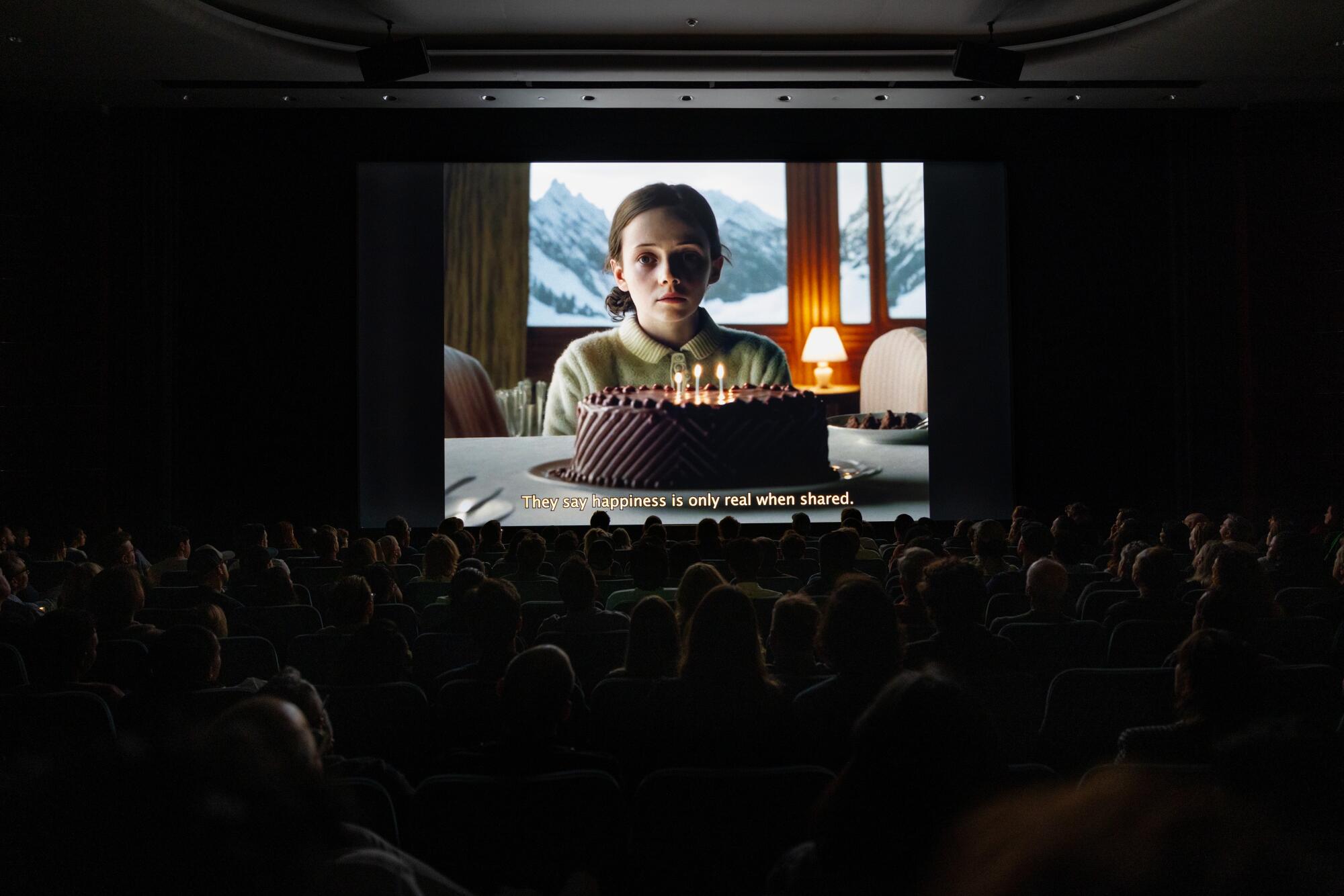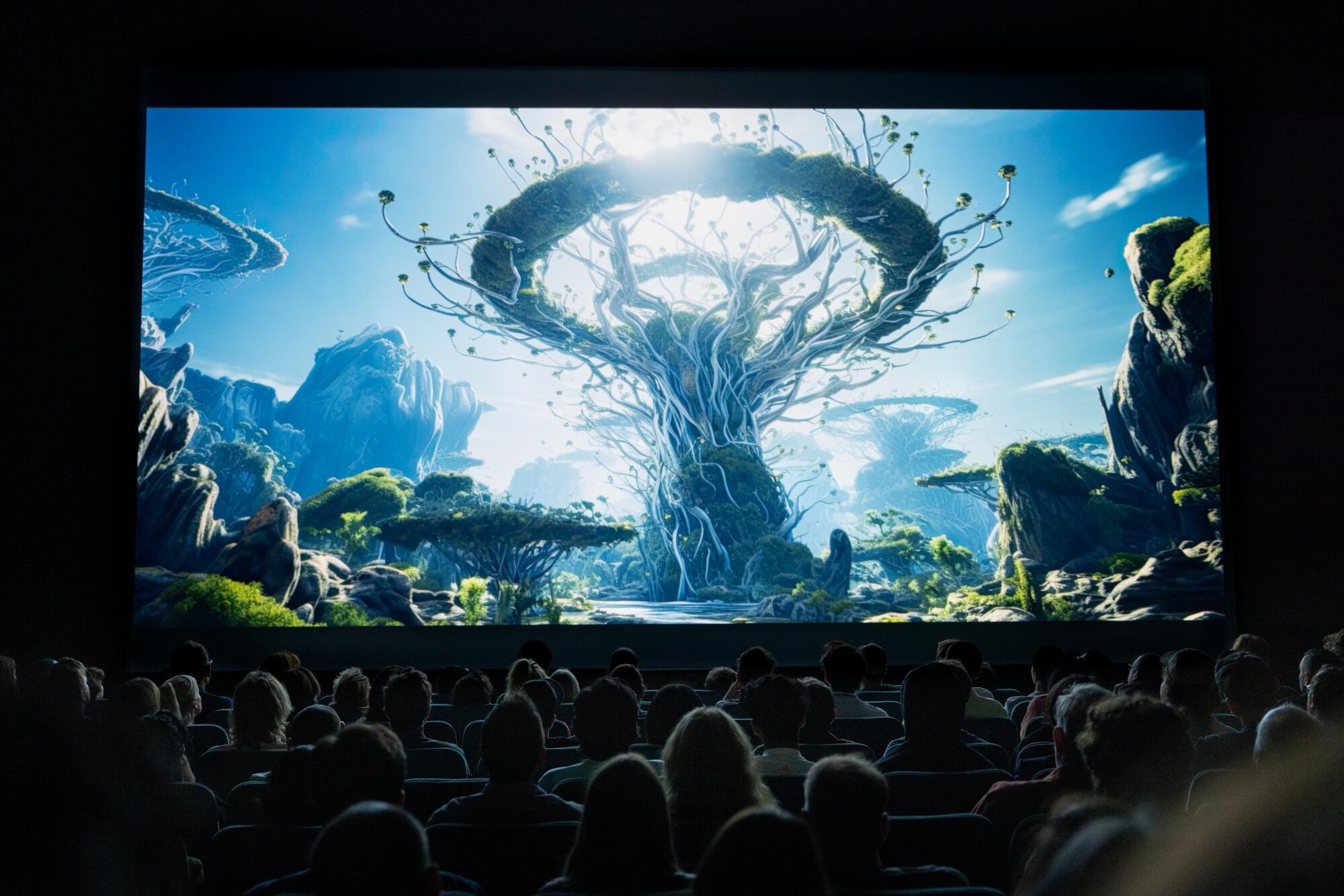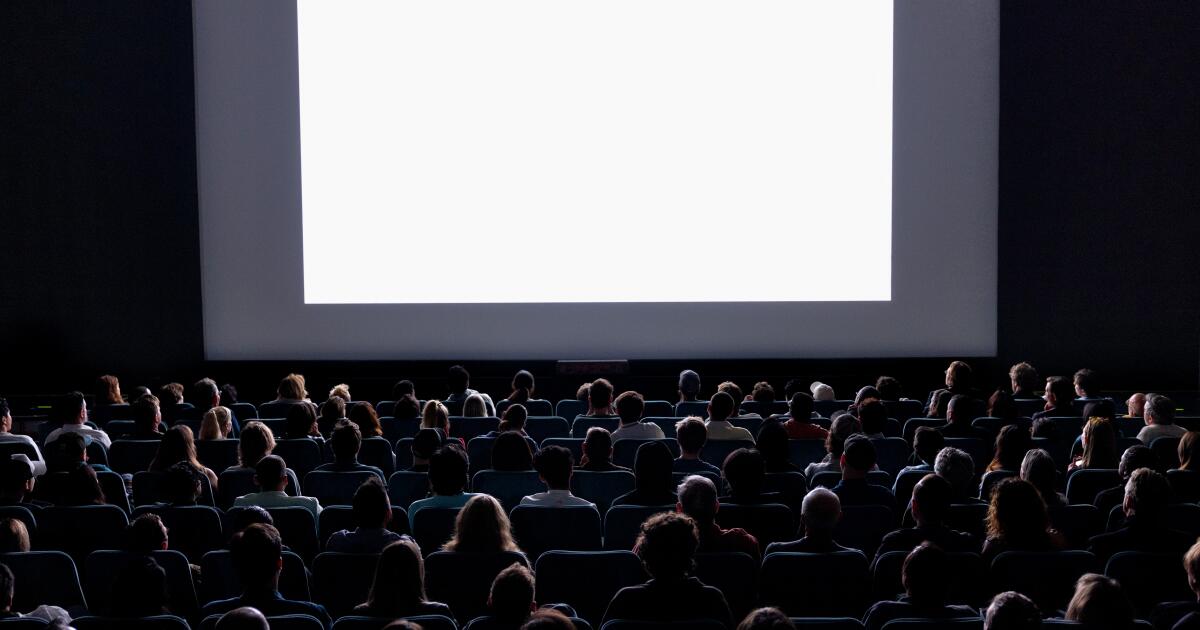[ad_1]
Blazers brushed up against streetwear. Miniature cameras dangled from a woman’s earrings. One man’s hoodie read: “Rendered With Love.”
Envoys from two parallel planets, software and showbiz, mingled in the Cary Grant Theatre on Thursday evening as they waited for the show to begin. Some recalled tales from the Cannes Film Festival; others debated the merits of different artificial intelligence platforms and pontificated on the future of “wearable AI.”
They’d all gathered, several hundred of them, on the Sony Pictures lot for a film festival aimed at highlighting the nascent world of AI-assisted filmmaking. And though the mood in the venue was one of enthusiasm and curiosity, it came at a uniquely fraught moment for the two intertwined industries.
After all, it was only a handful of weeks ago that Hollywood screenwriters wrapped up a protracted strike that found them picketing outside Sony and other major studios in protest of, among other things, the threat AI posed to their livelihoods. The writers’ union ultimately secured a contract that included substantial regulations on the use of the tech to script shows and films, but their on-screen counterparts in the Screen Actors Guild remain on strike over automation anxieties of their own.
Yet at Emergent Properties, the Adobe-backed festival featuring six short films made with a grab-bag of AI modules and techniques, that discord was largely background noise.
Instead, the focus was on the doors that AI can open for independent filmmakers and hobbyists.
“Tonight you’re gonna hear a lot about AI,” said Mike Gioia — one of the event’s organizers and a co-founder of the AI workflow startup Pickaxe — during his introductory remarks. “But really, tonight is about people. It’s about the filmmakers. And for anybody who’s a filmmaker in L.A., the reality that you deal with is there are just so many hoops you have to jump through to get an idea out of your head, onto a screen.”
He continued: “In the best-case scenario, what AI does is it just makes [that] a lot simpler.”
Many of the participating filmmakers emphasized what artificial intelligence software means for smaller-time creatives — people whose passion projects generally exist outside the Hollywood ecosystem subject to the recent strikes.

A scene from French filmmaker Anna Apter’s “/Imagine,” screened during the Emergent Properties festival.
(Jay L. Clendenin / Los Angeles Times)
“I wanted to make something in my room and not have to wait two or three weeks for someone to say, ‘OK, let’s do this or that,’ ” said Anna Apter, a director who set AI-generated images of children’s birthday parties to a monologue about loneliness in her short film “/Imagine.”
Speaking from Paris before the event, which she wasn’t able to attend in person, she added: “I know how all these jobs can be threatened by AI. But I feel like it gives people who don’t have big budgets — we don’t have excuses anymore, you know? We can do anything.”
“The whole idea is … how can we take this traditional model and not be afraid of these AI tools, but instead figure out a strategic way to let them work with every artist involved,” said Quinn Halleck, who used AI throughout the development of “Sigma_001,” a short film that drew inspiration from the real-life story of a Google engineer who thought the company’s AI chatbot may have become sentient.
But not everyone is so optimistic about how these two sectors will butt up against each other as AI continues to develop. The last few months have seen Hollywood’s production pipeline grind to a halt amid dual strikes by the WGA screenwriters’ union and SAG-AFTRA, the actors’ union, both of which have expressed concerns that AI may put people out of work or neuter their creativity.
The WGA ultimately secured a contract that didn’t close the door on AI screenwriting but did say writers can’t be compelled to use the software and blocked studios from cutting union members out of the loop entirely. Actors — who remain on strike — have focused their concerns on the digital simulation of performances. The Alliance of Motion Picture and Television Producers, which represents the major Hollywood studios in labor negotiations, has maintained that actors will retain control over their likenesses.
Even the “Emergent Properties” film fest prompted some push-back.
In the lead-up to the event, Gioia, one of the organizers, posted an invitation to the showcase on a Reddit forum for Los Angeles filmmakers. The response, at least publicly, was overwhelmingly negative.
“I’m not trying to be a Luddite and realize AI is coming whether the industry as a whole wants it or not, but poor taste and poor timing,” reads the top comment.
Another highly ranked critic added: “Especially with the strikes going on you’re pretty out of line.”
In private messages, people were more supportive of the event, Gioia said, and many ended up coming to the festival. Nevertheless, he said, he gets why a lot of commenters were critical.
“For people who work in film for a paycheck doing skilled but non-creative labor (like rigging lights), it’s quite frightening and doesn’t have any upside,” he told The Times via text.
(Sony, a struck company, did not sponsor the event, Gioia said; the festival organizers merely rented the venue from the studio.)
The AI on display at Thursday’s event was largely used for special effects purposes, rather than to replace actors with digital doubles as SAG-AFTRA’s concerns have emphasized. Some of the filmmakers did use AI to write or develop their scripts, according to an event brochure, and a few films featured AI-generated faces or voices.
Some event attendees admitted to feeling some hesitancy about the AI boom.

A scene from filmmakers Caleb Ward and Aminah Folli’s “Zebulon Five.” Ward runs the AI storytelling community Curious Refuge with his wife, Shelby.
(Jay L. Clendenin / Los Angeles Times)
Shelby Ward, the co-founder of Curious Refuge — an online community for AI storytellers that helped make one of the evening’s entrants, a nature “documentary” about an alien planet — asked the audience during a post-screening question-and-answer session how many people had messed around with AI. Many raised their hands.
She followed up: “I’m curious as well: who is kind of nervous about these tools? Anyone kind of anxious, a little overwhelmed?”
A smattering of hands went up — fewer than before, but not none.
“I would say I fall into that — I did,” Ward said. “I kind of went through a few months of, like, my paradigm was shifting.” But putting in the time to explore it, she continued, will ultimately make people more comfortable with the software.
The participating filmmakers cautioned that this technology still has its limits. Keeping characters’ appearances consistent between shots is tough, they said; eyeballs continue to flummox the software.
“Right now, it’s impossible for it to tell a good story,” said Paul Trillo, another filmmaker. He continued, to applause: “I think that’s up to people to do.”
(Trillo’s screening for the night was a music video filmed in the Louvre that used AI effects to distort and disfigure classic works of art. The conceit, he told The Times beforehand, is “a little tongue in cheek.”)
Nevertheless, the filmmakers emphasized, AI technology is rapidly improving. Several talked about having to go back and redo parts of their films during production because a newer, better tool had come out midway through the process.
In the world of AI filmmaking, Trillo said, “‘impossible’ is a very temporary term.”
[ad_2]
Source link




